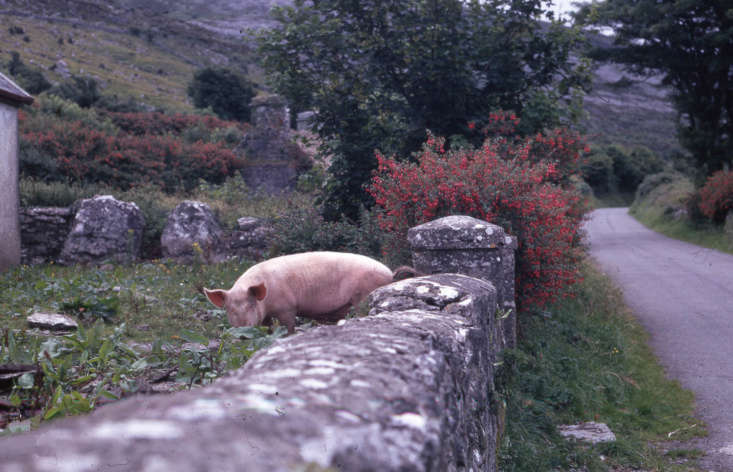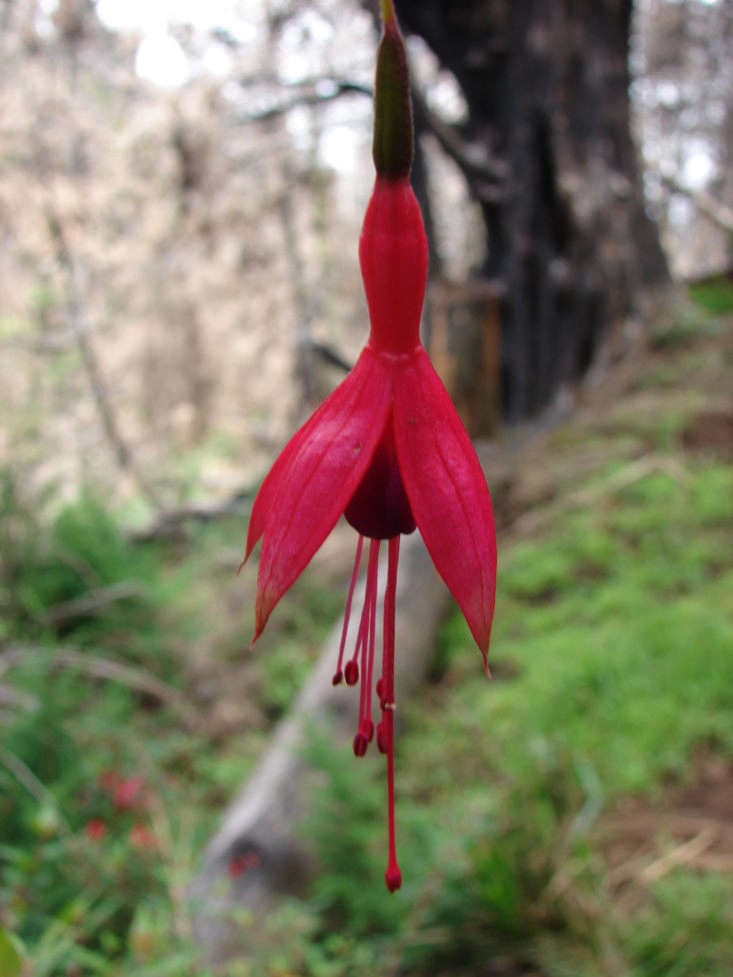Fuchsia, Fuchsia: “Lady’s Eardrops”
Two years ago when I traveled to the west coast of Ireland in August, I expected to see plenty of velvety green vistas. What I didn’t anticipate on the Emerald Isle was that the color of the landscape would not be limited to shades of green. Instead it was a riot of hues, due to the pervasive presence of wildflowers crowded together on roadsides and growing in broad swaths in the fields.
There was the radiant yellow of gorse and St. John’s wort, the bright purple of vetch and marsh woundwort and loosestrife. There was also pink bramble and white meadowsweet, among many others. But one plant in particular caught my eye from the window of our fast-moving car. It was a large shrub and was covered in small bright red flowers. Imagine my surprise when I had the chance to examine it at close range and discovered that it was fuchsia.
Whatever your garden needs, there is bound to be a fuchsia that is right for you. The genus has approximately 100 species which have been developed into more than 8,000 cultivars and hybrids. Fuchsias exist primarily either as upright shrubs or as trailing plants that spill out of window boxes and other containers, but they can also be pruned into alternate forms such as standards.
Fuchsias have a reputation for being fussy and somewhat difficult to grow. However, their requirements are really not that unreasonable, and if you tend them properly, they will reward you with spectacular summerlong flower displays that can attract pollinators such as bees and even hummingbirds.
Read on to learn more.

Before seeing it in Ireland, I had always thought of fuchsia as a small, quite delicate annual. My only previous experience with it had been limited to the untimely demise of a hanging basket. I had been trying to coax this fuchsia into bloom on a seventh floor windowsill when it tumbled out, effectively committing suicide on the unforgiving concrete sidewalk below (which fortunately was unpopulated at the time).

The fuchsias of Ireland didn’t appear to need any coaxing. They were robust and thriving, forming hedges along antique stone walls and flourishing as bold specimens claiming their territory in idle pastures.

A look in A Beginner’s Guide to Ireland’s Wild Flowers identified this plant as Fuchsia magellanica and further research labeled it as ‘Riccartonii’, a hardy species commonly known as the “Humming Bird Fuchsia” or “Lady’s Eardrops.” It is actually a native of Chile and Argentina that arrived in England in the 1700s and became a popular garden plant there in the 1800s. It is thought that fuchsia may have escaped from cultivation and began to appear as a “volunteer” in the Irish countryside, where it proliferated in the hospitable cool, moist climate. It is so common there today that some people have even suggested it should replace the shamrock as Ireland’s national flower.

Here in the US, fuchsias are common garden plants, particularly useful for adding a zing of color to shaded areas.The ones most often sold at garden centers are tropical fuchsias (USDA zones 8 to 10) and are frequently grown as annuals although they can survive cold winters if brought inside and allowed to go dormant or grown in a cool, bright spot as houseplants.

Less well known are the hardy fuchias (USDA zones 5 to 7) like the ones I saw in Ireland. They are substantial bushes which, with the right care, can be grown yearround outside in northern climates.

The complicated two-toned blooms (think chandelier-style earrings) usually appear as pendulous, terminal clusters that will bounce around in a breeze and can turn a shady garden nook into a jewel box of vivid color. Read on for tips on how to get these beauties to perform for you.
Cheat Sheet
- Use fuchsias alone in containers or combine them with other shade-tolerant plants such as oxalis, begonias, lobelia, coleus, or hardy geraniums.
- Vigilant deadheading will keep your plant in flower.
- Fuchsias bloom on new wood so aggressively pruning hardy varieties in spring will encourage vigorous flowering.
- Because fuchsias are heavy feeders, many experts suggest a monthly dose of natural liquid fertilizer such as fish emulsion or compost tea, especially for container plants.
Keep It Alive
- Fuchsias prefer rich, slightly acidic, moist but well-drained soil.
- These plants are easily burned by bright sun, so plant fuchsias in shade or in a spot that gets morning sun and afternoon shade.
- Do not plant fuchsias in full sun unless you are gardening in a cool, moist climate such as the Pacific Northwest.
- Fuchsias, even the tropical varieties, are not heat lovers and do best in temperatures ranging from 55 to 80 degrees Fahrenheit.
- Fuchsias cannot survive parched soil, especially when grown in containers. Water frequently, especially in hot, dry weather.
If you decide to grow hardy fuchsias in a cold weather climate, your plants will benefit from a generous layer of organic mulch in winter and, because they tend to appear late in the spring, it is recommended that you leave the previous year’s growth in place until the new spring shoots appear. The old woody stems will offer some winter protection to the plant and will also serve as a reminder of your plant’s location while it is dormant.
See more growing tips in Fuchsia: A Field Guide to Planting, Care & Design in our curated Garden Design 101 guides. Read more about our favorite container plant combinations:
- Container Gardening: 12 Shade-Loving Plants in My Backyard
- Container Gardening: Sarah Raven’s 7 Tips for Perfect Flower Pots
- How to Garden Like a Frenchwoman: 10 Ideas to Steal from a Paris Balcony










Have a Question or Comment About This Post?
Join the conversation